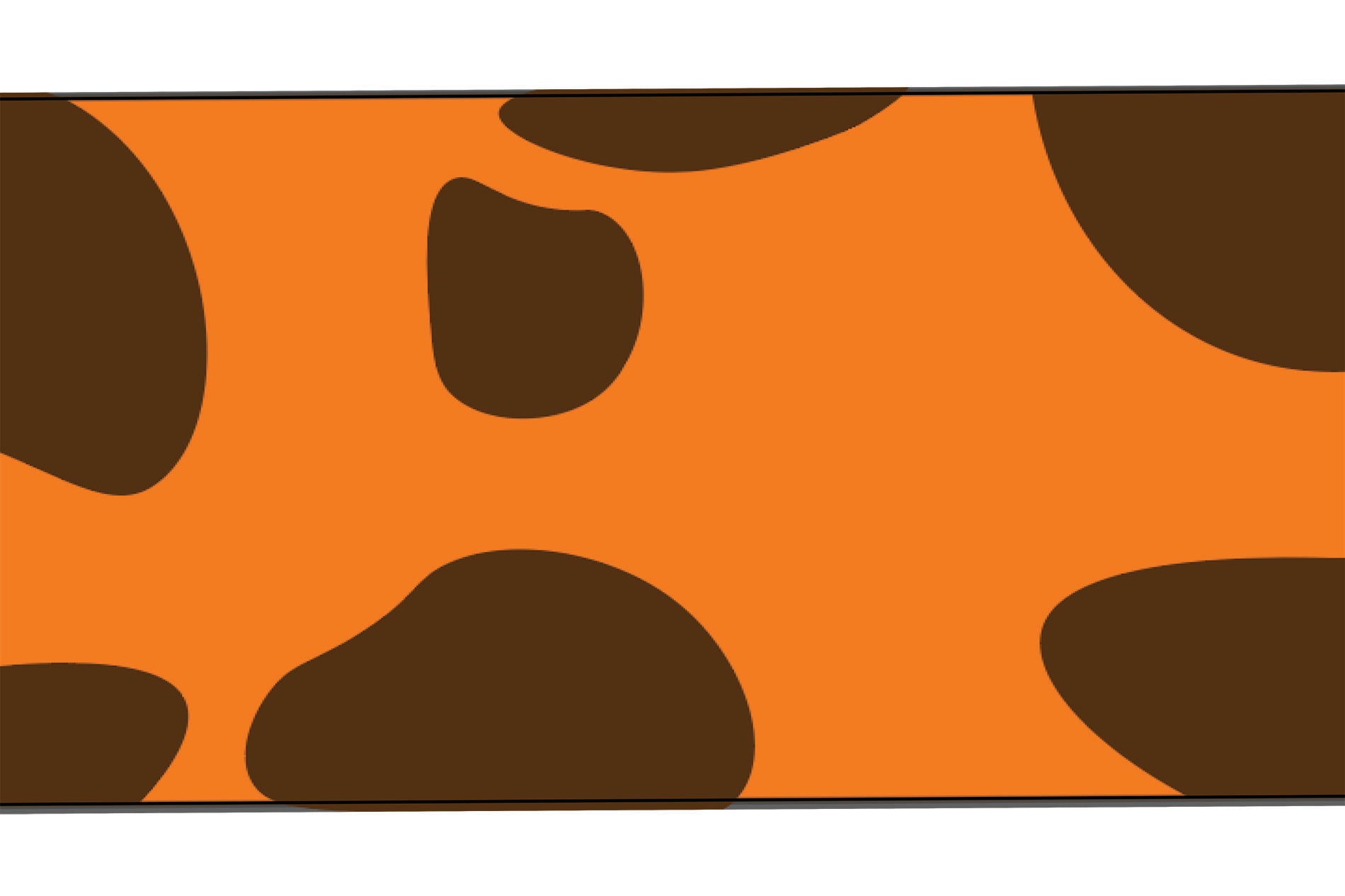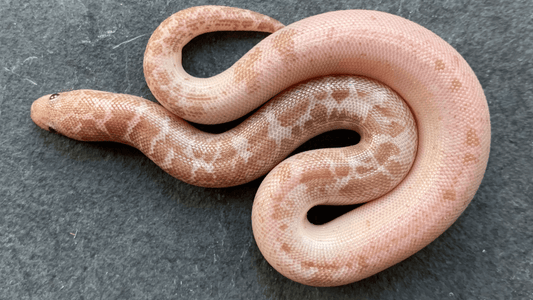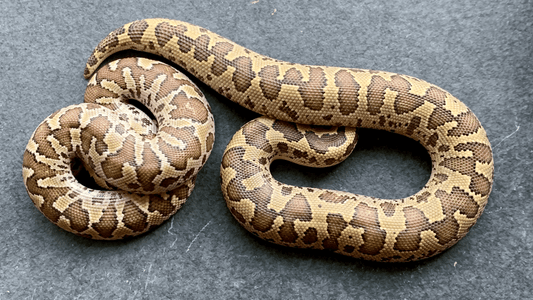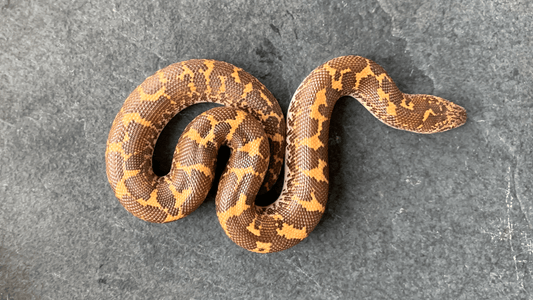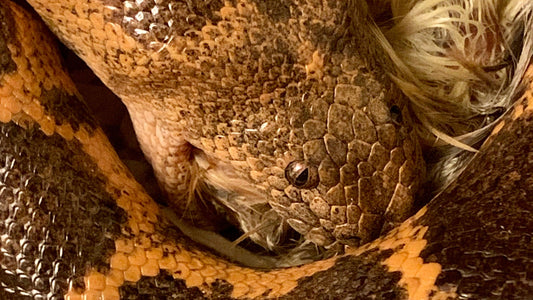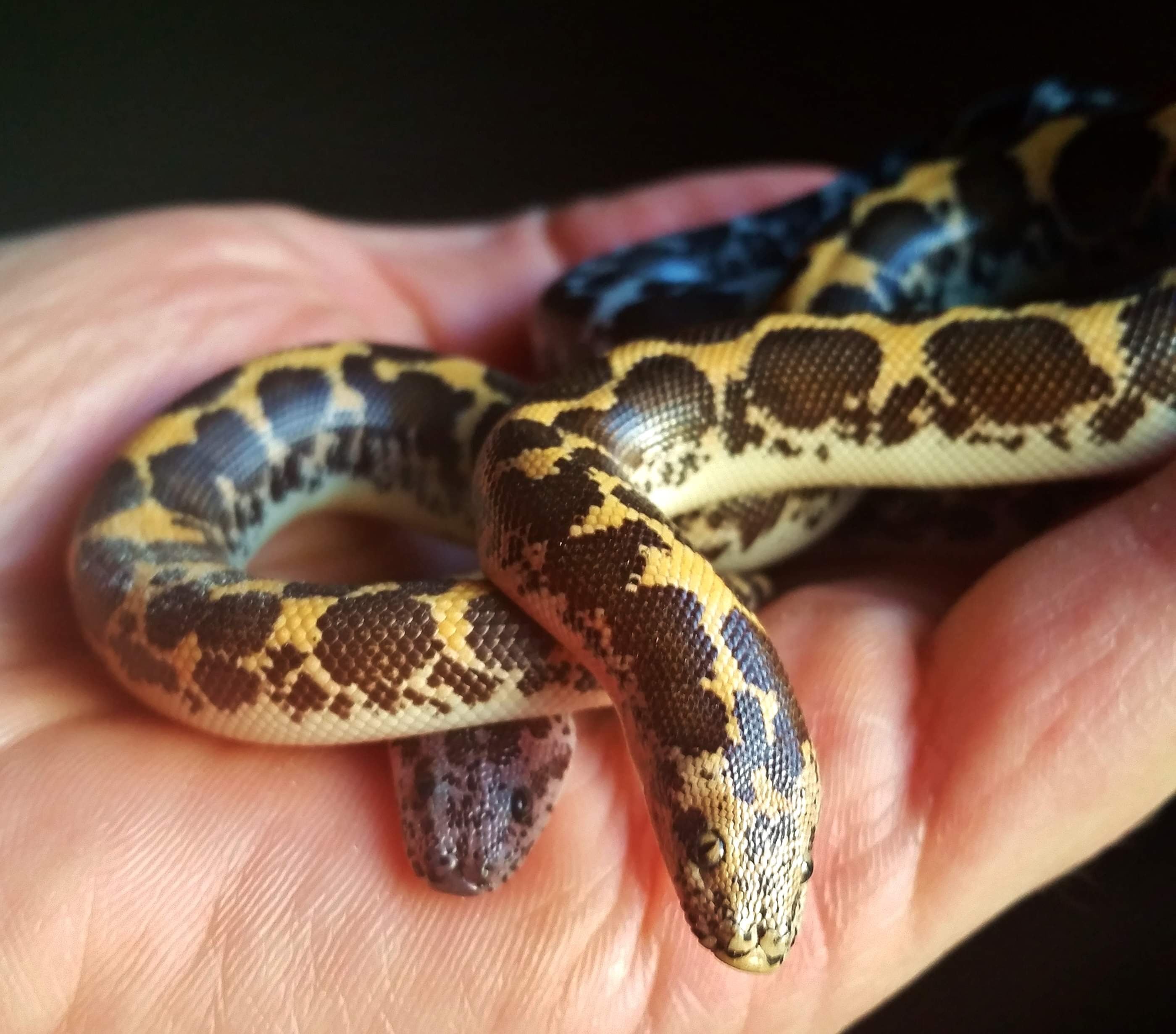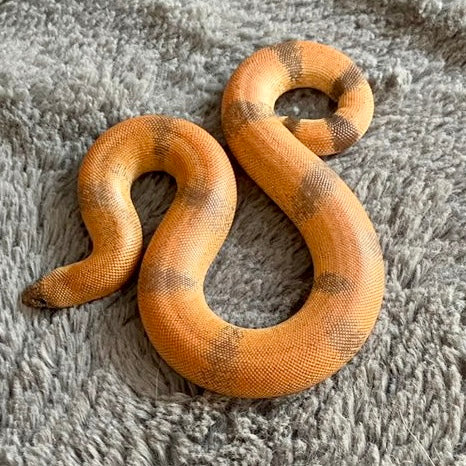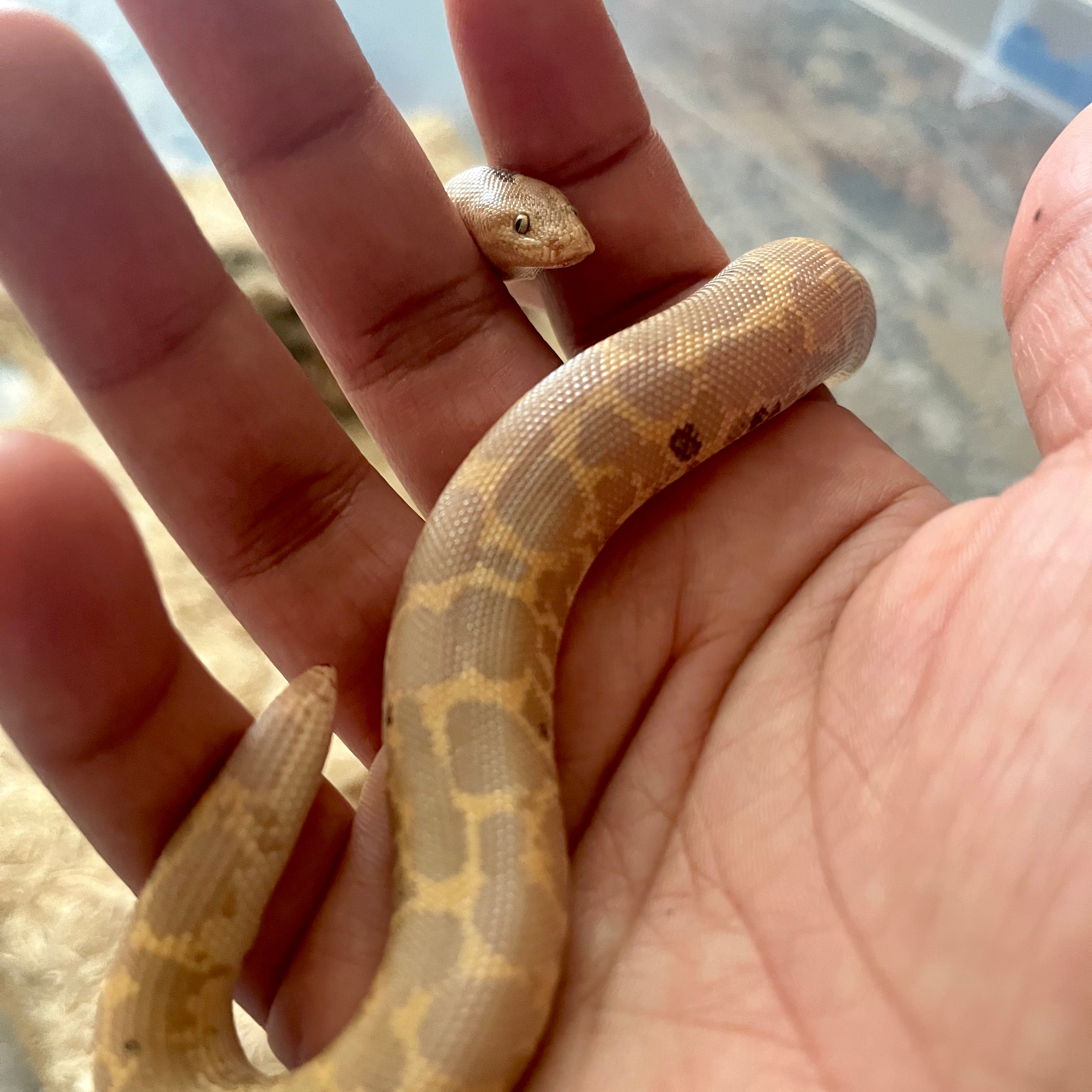Why do we recommend this method to set up your new baby sand boa?
The amount of information online about sand boa care is overwhelming. How do you find HIGH QUALITY resources about sand boas?
You want the BEST for your new snake. A huge enclosure with lots of live plants, frequent handling for mental stimulation… That sounds like the best way to take care or your new sand boa, right?
WRONG.
Well...not at first.
This is mistake we see a lot of new keepers make, and it is the number one cause of feeding issues in baby sand boas. Why does this happen?
That's a fantastic question. Most snake breeders, like The Serpentry, raise baby snakes using small enclosures called pencil tubs. The tubs are short, small, skinny, and allow the snake to touch 3 sides of the enclosure. This helps the baby sand boas feel secure.
Pencil tubs may seem odd, and even cruel! We are here to assure you that they are in the best interest of the animal in...and (this is important)...a breeding setting.
Pencil tubs allow breeders to keep a large number of babies at the correct temperatures, clean them efficiently, monitor their health more easily, and get them feeding ASAP!!!
When baby sand boas are moved from a pencil tub to a huge gorgeous enclosure, they frequently stop eating.
Breeders and new pet owners need to work together to transition the babies from a breeding environment to their new life as a pet. Does this mean baby sand boas need to be in tiny enclosures forever?
NOPE!
Once your sand boa puts on a little size and you learn how to take care of them, we encourage people to experiment with larger and more elaborate enclosures. Some people prefer simple enclosures, while others make huge bioactive sand boa enclosures.
This guide will teach you how to set up a budget friendly enclosure for baby Kenyan sand boas (and most species of sand boa). The purpose of this sand boa care sheet is to help you transition your snake from living in a breeding facility to living with you!
Setting Up a Baby Sand Boa Enclosure
Baby sand boas generally do better in a smaller enclosure during the first few months. We suggest a 6qt plastic tub with a snug lid, preferably with latches.
Make sure the lid is secure using a heavy object, clips, or Velcro. Sand boas can climb and will fit through impossibly small gaps! DO NOT use Exo Terra or plastic critter keepers for baby sand boas! They can escape.
Baby sand boas can also climb up tall glass aquariums using wires or the silicone in the corners. Do not assume they can’t climb out of a tall cage.
Make sure air holes are so small that a baby sand boa can’t fit the tip of its nose in the hole. They will stick their heads through shockingly small holes and become stuck or escape.
If you have multiple sand boas, each will need its own enclosure. Adult sand boas will eventually need a 10-30 gallon terrarium depending on their size (males are much smaller).
Substrates for Sand Boas
There are many substrates that will work well for sand boas (and we will discuss these in a future guide). The important part is that your sand boa can burrow in whatever substrate you chose, so make sure you are generous! They will appreciate a few inches of bedding.
We strongly prefer aspen shavings or aspen chips as they are light, cheap, and easy to clean.
What to Put in your Sand Boa Enclosure
An enclosure will need an appropriately sized water dish that is easy to clean and sanitize. Sand boas need fresh, clean water available at all times. If your water is treated, you should use a water conditioner or bottled water spring water.
You will want at least one hide (plastic cave, snake hide box, upside down clay saucer, etc.). Many sand boas also appreciate cardboard tubes, sticks, rocks, cork bark, fake plants, and other terrarium decor to climb on and use as hides.
Be careful with cholla wood tubes…if the snake gets stuck in a hole, the wood is extremely hard and it will be difficult to save the snake. Cork tubes are safer and easier to cut.
Leaves and sticks can also make great tools to give your sand boa enrichment, but make sure to bake them first to avoid any unwanted hitchhikers.
Heating and Humidity
Sand boas need to have a temperature gradient so they can thermoregulate and digest their food.
You can either heat your enclosure from the top using various heat bulbs (glass tanks with screen lids) or bottom using a reptile heating pad (preferred method for babies).
Heat pads MUST be plugged into a rheostat or thermostat (these are not the same as a thermometer). Unregulated heat pads can burn your snake. The warm end of the enclosure should reach 95°F (bottom of the tub if using a heat pad) and the cooler end should be in the mid 70s °F.
They can tolerate temps in the 60s °F on the cool side. Sand boas generally do fine with normal household humidity (40-60%). Contrary to popular belief, they don't need super low humidity!
We may spray water a few times a week when it is very dry in winter or snakes are shedding.
You can also make a humid hide to help your snake shed. This can be something as simple as a plastic sandwich container partially filled with damp sphagnum moss that has a hole cut in one side.
Check out our best shedding tips and tricks HERE.
Lighting for your Sand Boa
Kenyan sand boas do not need any special lighting, but should be offered a natural day and night cycle. Avoid setting the enclosure in direct sunlight as this could spike the temperature too high. Sand boas should receive between 8 and 12 hours of light a day.
How to Feed a Baby Sand Boa
Very young Kenyan sand boas (under 6 months) can be fed every 5-7 days. Juvenile and adult sand boas should be fed every 7 to 14 days depending on the size of the food offered and the condition of the sand boa.
We prefer to feed frozen/thawed rodents. Live prey, especially older mice/rats, can do serious damage to your snake by biting them.
The prey item should be slightly larger than the widest part of the snake and leave a slight bulge after feeding that disappears after 1-2 days. For most baby sand boas, a pinky mouse is the perfect size. Older babies may be on peach fuzzy mice
If there is no "food baby" bulge after feeding, go a size up. If there is a huge "food baby" that lasts for days or your snake regurgitates, the prey was too large.
Food should always be offered to your sand boa warm, completely thawed, and dry. We recommend feeding INSIDE the cage. Look underneath the tub to find your snake, carefully uncover the sand boa's head, and gently vibrate the nose of their prey against their nose. They should snatch it!
If not, you can leave the food overnight and remove it in the morning. Sometimes baby sand boas need a few weeks to get adjusted and start feeding.
What do you do if your sand boa stops eating?
Adult male Kenyan sand boas are known to go off of food for long periods of time (3 months or more!) during breeding season. This typically starts around 1-1.5 years of age. If your sand boa stops eating, ensure that you are meeting their basic needs (temperature, day/night cycle, clean water, etc.).
If all of their basic needs are being met, there are a variety of tricks you can try to get a fussy sand boa to eat again. Do not hold your new sand boa until it starts feeding regularly.
Check out our feeding troubleshooting feeding issues in sand boas guide HERE.
Cleaning a Sand Boa Cage
Remove waste from the substrate often (spot cleaning) and completely change substrate regularly/as needed. Aspen can be prone to mold when wet, so remove any damp bedding.
Baby sand boa feces is very small and you may not see it, but they usually go on the bottom of the cage. It makes wiping up their tiny poos easy!
To disinfect the sand boa cage, you can use a mix of 50-50 water and vinegar (rinse thoroughly) or a disinfectant made for reptiles. Never use anything scented or not made for pets.
Spot cleaning the sand boa cage once a week and deep cleaning the cage once a month is a reasonable schedule.
Have a gross water bowl with some hard water buildup? A soak with vinegar will have it looking good as new!
Handling a Sand Boa
Sand boas are ambush predators and may bite if approached incorrectly. They stick their little faces out of the substrate and wait for prey to walk by...then BAM!
Never blindly reach into the cage or touch your sand boa's face in this position, or you are asking for a feeding bite.
The best way to grab a sand boa is to uncover them and slowly touch their back end before scooping them up. Give them a minute to realize you aren't a snack!
Less confident snake owners might want to use a stick or small snake hook to gently pet the snake before attempting to pick it up to avoid startling it or triggering a feeding response.
A leather glove is great too! Make sure you use a leather glove to pick up a nippy sand boa because the leather acts like skin and won't catch on their teeth as much as fabric.
When being held, sand boas like to be supported from underneath. Allowing your sand boa to dangle will make it nervous and more likely to bite.
Avoid putting fingers in your snake’s face (this includes “booping”), and do not handle them for a day or two after feeding.
Most sand boas are reasonably calm and can be regularly handled. Bites from babies and males are like tiny pin pricks and nothing to worry about! We call them angry Velco!
Adult sand boa females can pack a punch even though their teeth are small (fast and strong for their size), so be careful around feeding time! A cat scratch is still significantly worse.
Sand Boa Shopping List
We've compiled a list with the essential items, and nonessential, to set-up your sand boa enclosure. But first a bit of transparency...
We are part of Amazon's affiliate program and receive a small commission when you use our links below. This small financial contribution helps us run our blog and take care of the serpents! We only link products that we have used and approve (and we may add/remove products as we try them).
We greatly appreciate your support when you use our links!
Recommended Essential Supplies for a Baby Sand Boa
- 6qt tub with lid (we like the Sterilite clear latch boxes, available at Target)
- Weights or Velcro to secure the lid
- Substrate Options
- Aspen (Zoomed, So Phresh)
- Sani chips
- Water dish (cheaper to get these at a store)
- Hide(s) and decor
- Under tank heating pad (we prefer non-adhesive pads) *Please note: we have not tested this specific brand, but it has been recommended to us as an option. *
- Rheostat OR thermostat
- Temperature gun (Etekcity Lasergrip 774 or similar)
- Spray bottle (for misting water)
- Metal feeding tongs
- Water conditioner (if needed)
- Appropriately sized frozen rodents
- The SandBoa Book
Other Recommended Products
- Disinfectants
- Hydration
- Regurgitation issues
- Dietary supplement (for illness)
- Mites
- Spray for the snakes
- Spray for the enclosure - Provent-a-mite
- Mini Snake Hook
- Hydrometer
- Mini Turtle Sand Box!
- Enrichment Ball for Climbing
- Leather Gloves (we use these)

